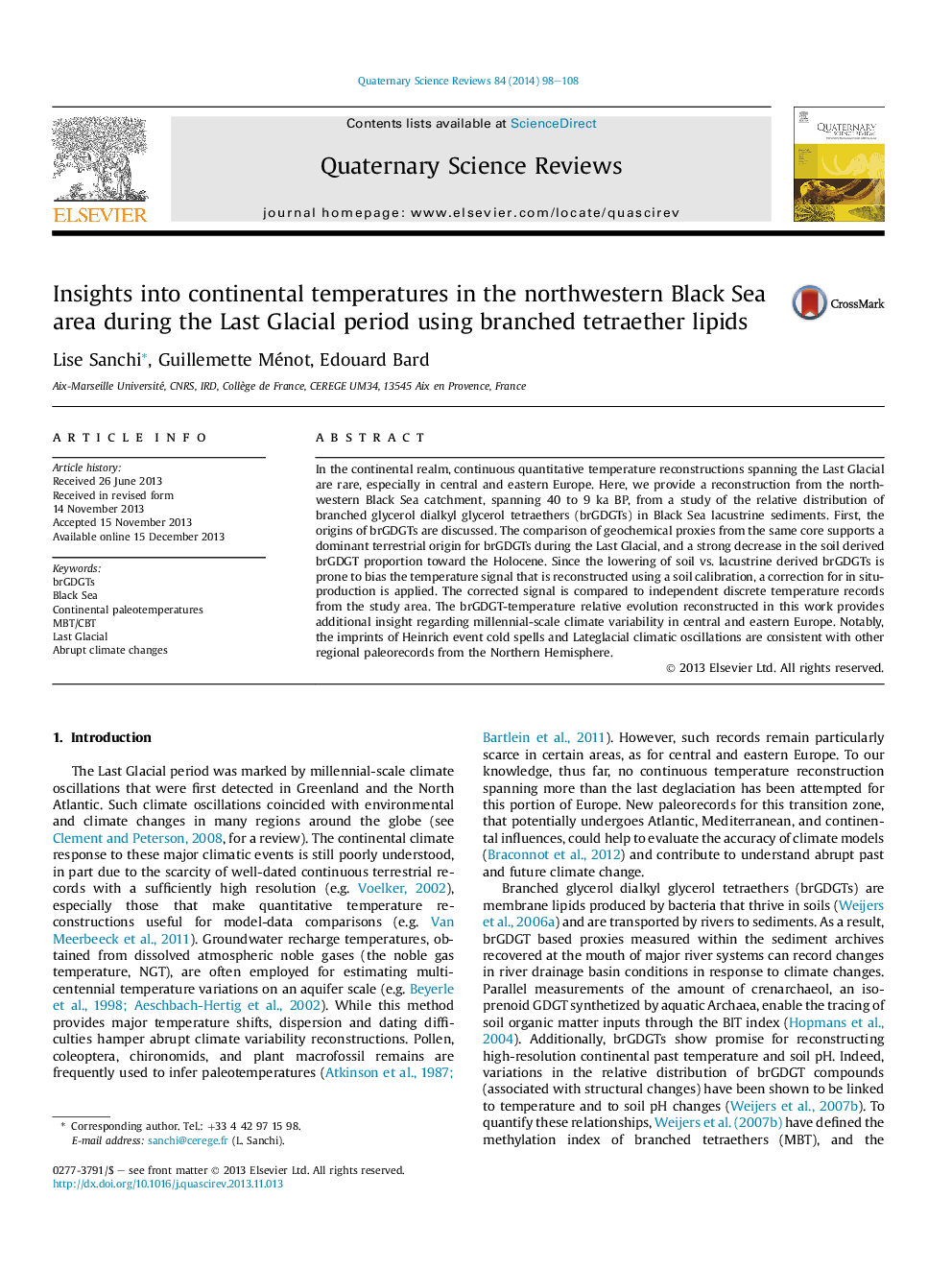| Article ID | Journal | Published Year | Pages | File Type |
|---|---|---|---|---|
| 6446578 | Quaternary Science Reviews | 2014 | 11 Pages |
Abstract
In the continental realm, continuous quantitative temperature reconstructions spanning the Last Glacial are rare, especially in central and eastern Europe. Here, we provide a reconstruction from the northwestern Black Sea catchment, spanning 40 to 9Â ka BP, from a study of the relative distribution of branched glycerol dialkyl glycerol tetraethers (brGDGTs) in Black Sea lacustrine sediments. First, the origins of brGDGTs are discussed. The comparison of geochemical proxies from the same core supports a dominant terrestrial origin for brGDGTs during the Last Glacial, and a strong decrease in the soil derived brGDGT proportion toward the Holocene. Since the lowering of soil vs. lacustrine derived brGDGTs is prone to bias the temperature signal that is reconstructed using a soil calibration, a correction for in situ-production is applied. The corrected signal is compared to independent discrete temperature records from the study area. The brGDGT-temperature relative evolution reconstructed in this work provides additional insight regarding millennial-scale climate variability in central and eastern Europe. Notably, the imprints of Heinrich event cold spells and Lateglacial climatic oscillations are consistent with other regional paleorecords from the Northern Hemisphere.
Keywords
Related Topics
Physical Sciences and Engineering
Earth and Planetary Sciences
Geology
Authors
Lise Sanchi, Guillemette Ménot, Edouard Bard,
